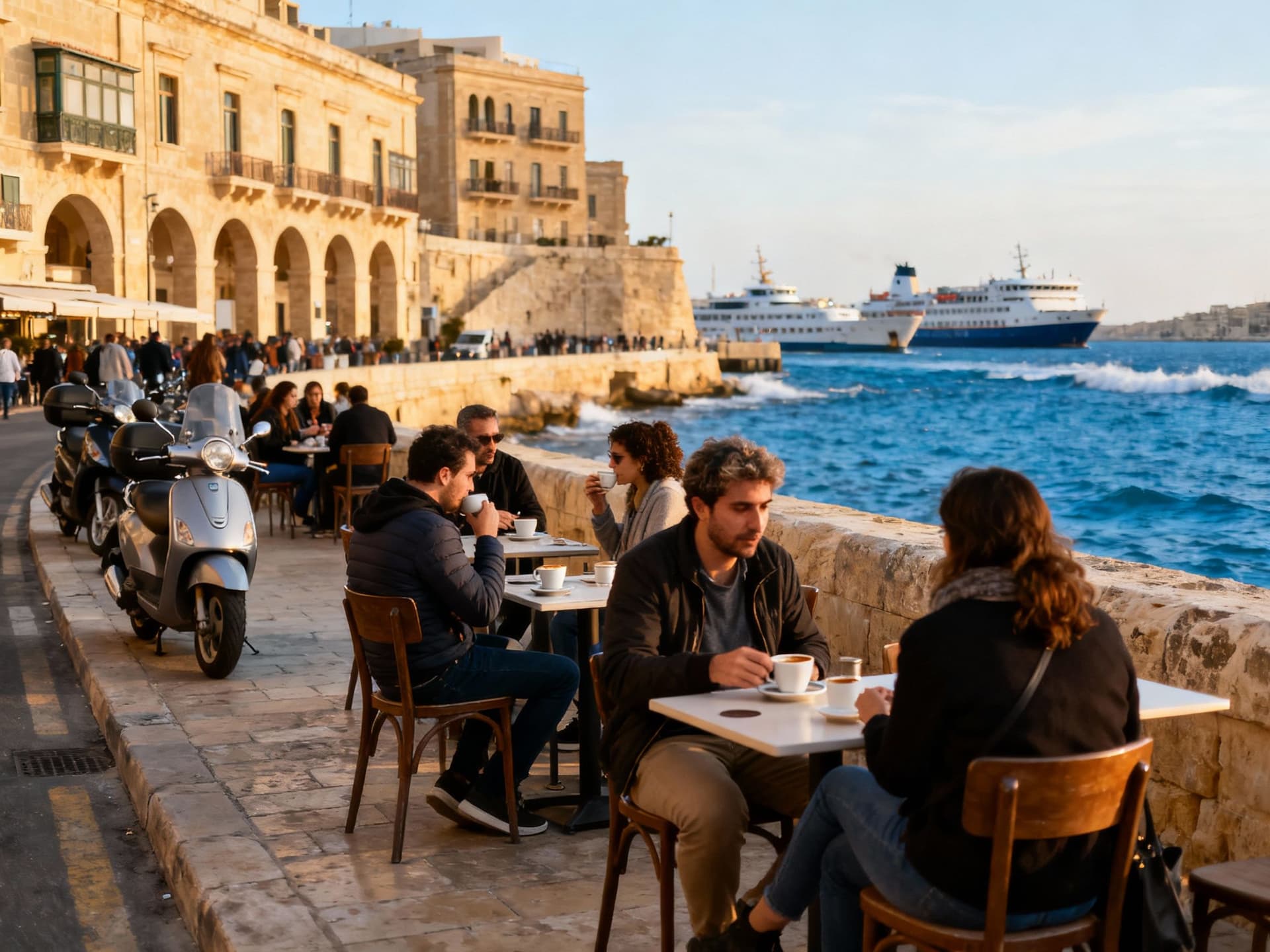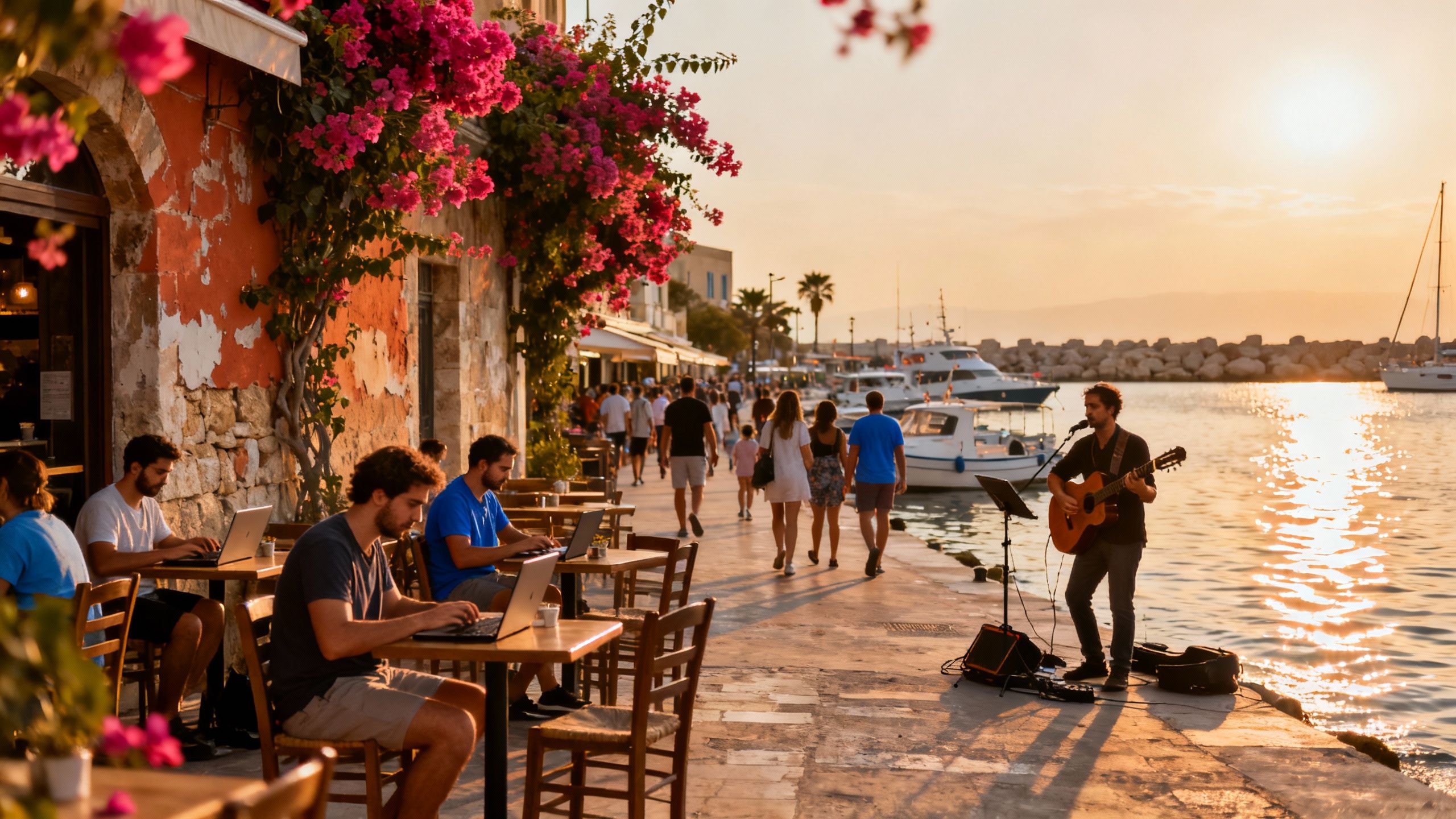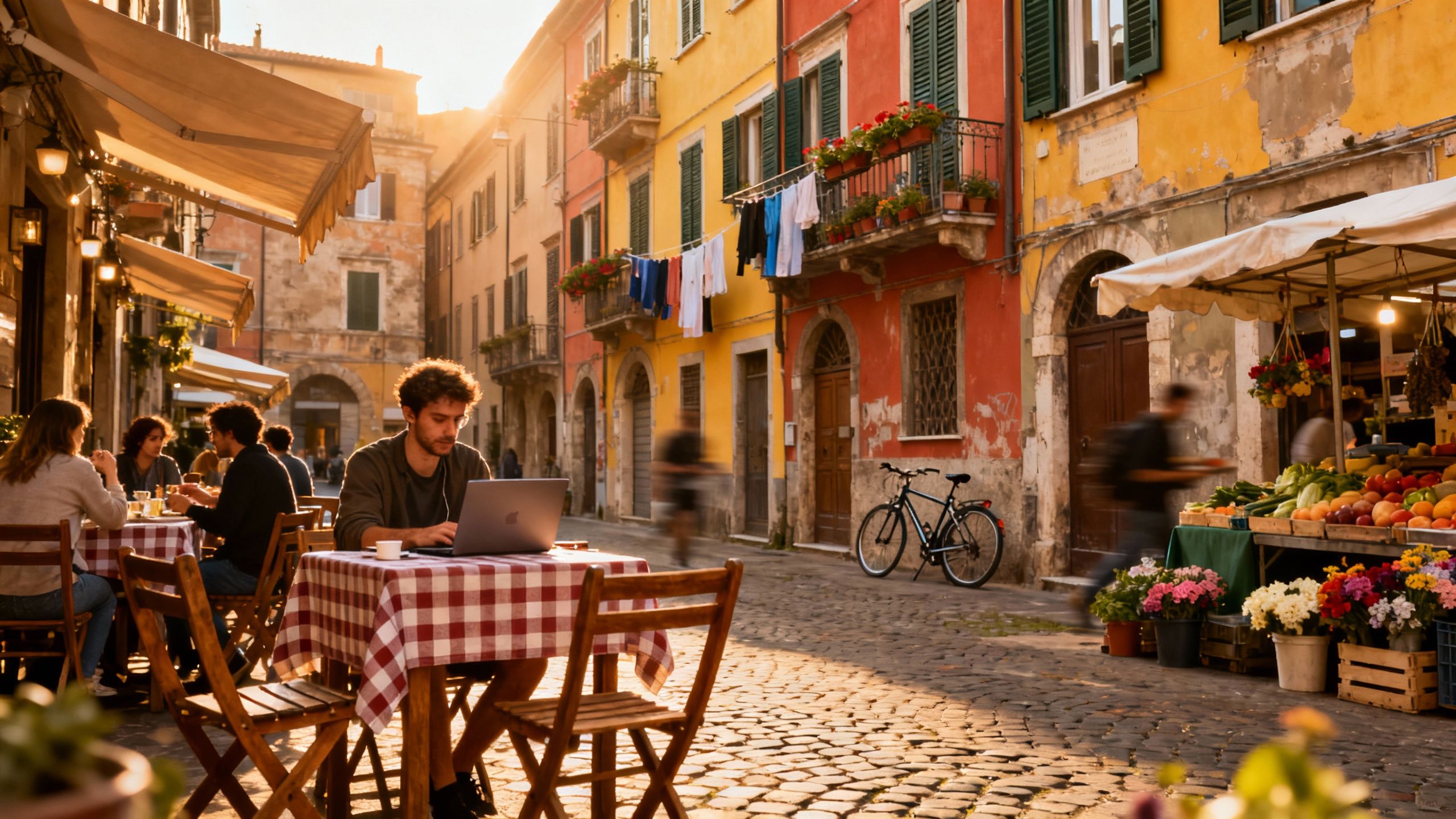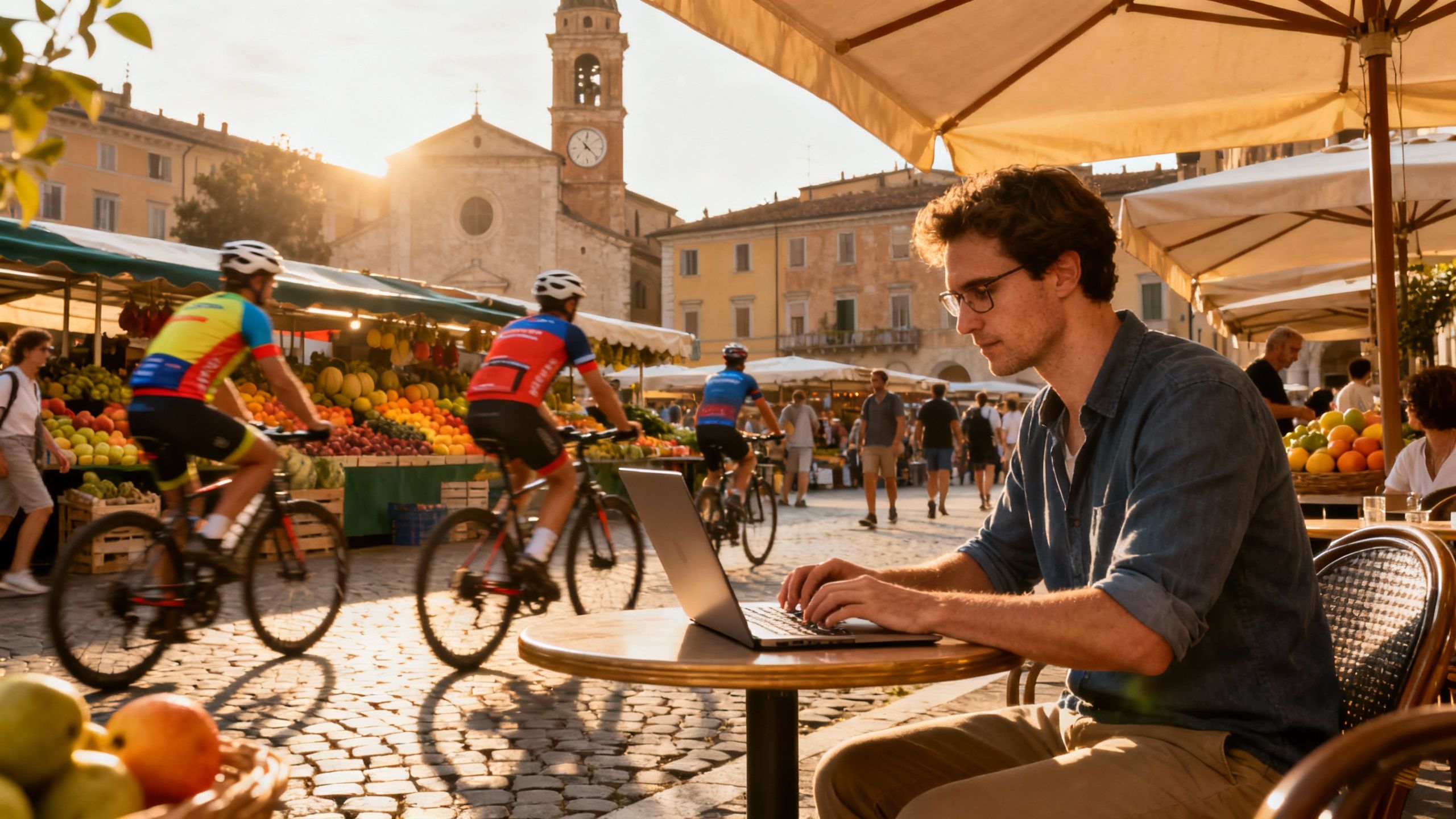Malta Neighbourhoods: Lifestyle Tradeoffs for Nomads
Compare Sliema, St Julian’s, Valletta and Gozo through lifestyle tradeoffs—focus on coworking, internet, seasonal timing and agent checks for confident buying in Malta.
Imagine sipping espresso on Sliema’s promenade as ferries bob in the harbour, then taking a ten‑minute walk back to a bright apartment with a dedicated desk and fiber internet—this is everyday life in Malta for many nomads. Small islands have big rhythms: morning sea swims, late lunches that stretch into conversation, scooter zips between neighbourhood cafés. That light, the limestone streets, and English‑friendly signage make Malta feel instantly usable. But loving a place and buying in it are two different adventures—so let’s compare neighbourhood vibes, the realities of working here, and the practical house‑hunt tradeoffs you won’t hear in glossy brochures.
Living Malta: the daily rhythms that decide where you’ll buy

Life here mixes Old World texture with modern conveniences. Valletta’s baroque streets give you museums, narrow cafés and a stately calm; Sliema and Gzira trade history for promenades, coworking spots and a steady expat crowd; St Julian’s is nightlife, late dinners and serviced apartments. Gozo feels rural and restorative—perfect for deep‑focus weeks. These differences shape practical needs: do you need a fast commute to coworking? A terrace for after‑work aperitifs? Or quieter lanes and parks for family life?
Sliema & Gzira — the nomad comfort zone
If you want cafes with plug sockets, coworking within walking distance and an easy ferry to Valletta, Sliema and neighbouring Gzira are the default. Expect apartment blocks, seafront promenades and a mix of long‑term renters and short‑stay serviced flats. Rent here tends to be higher than the countryside, but you trade that for convenience and community: morning coffee meetups, reliable fibre in newer buildings and social calendars full of networking and beach meetups.
St Julian’s — social energy and louder summers
Want bars, restaurants, and a weekend vibe that lasts till dawn? St Julian’s is it. That energy is perfect if your social life is as important as your spreadsheet. But summer crowds push noise and short‑term tourist lets, so if quiet is mission‑critical for work calls, look for apartments set back from Spinola Bay or consider Sliema’s quieter streets instead.
Lifestyle highlights to weigh
- Morning sea swims at Sliema waterfront; espresso and laptop time at Caffè del Mar or local favourites.
- Weekend markets in Marsaxlokk for fresh fish and slow Sunday lunches.
- Coliving hubs and coworking in Gzira for cheaper long stays and community events.
- Quiet, historic Valletta for culture‑rich living and compact, characterful apartments.
Making the move: matching property types to how you live

Here’s where lifestyle and property reality clash or click. Malta’s housing stock ranges from converted townhouses with stone terraces to modern glass condos with building‑maintenance fees. Your choice affects everything: desk setup, cooling in July, and whether you’ll actually invite friends over for dinner. Think beyond bedrooms—prioritise a reliable workspace, a balcony, and internet that survives a video call.
Property styles & what they mean for remote life
Converted townhouses in Valletta and Mdina offer charm and thick limestone walls that keep interiors cool—great for weekend artists and city lovers—but they can lack dedicated desks and parking. Modern developments in Sliema/Gzira add lifts, fibre and terraces but come with management fees. On Gozo, you’ll find farmhouses with space and peace, but plan for slower supply chains for furniture and longer commutes to formal coworking spaces.
Working with local experts (why agency choice matters)
A local agent who knows the nomad scene will shortlist apartments with dedicated desks, confirm fibre speeds, and flag noise issues in high season. They’ll also help with rental contract norms (short‑term tourist lets are common) and point you to properties with reliable elevators and AC units—things you’ll thank them for during a July heatwave. Ask agencies specifically about internet providers, recent speed tests, and neighbours’ profiles.
- Check these lifestyle + practical items before you sign: 1. Confirm fibre availability and average upload speed with a recent test. 2. Verify if the apartment has a quiet room that fits a 140cm desk. 3. Ask about building management fees and what they cover (water, lifts, cleaning). 4. Inspect for double glazing or shutters for summer noise and heat. 5. Request recent neighbour references if available.
Insider knowledge: expat truths, seasonal quirks and red flags
Expats often say they wish they’d known two things: how loud summer can be in party zones, and how quickly neighbourhoods change when short‑lets move in. Malta’s compact size means a peaceful lane can become busy if investors convert homes into tourist lets. That affects community, parking and the availability of long‑term rentals.
Cultural integration: language, social life and the local pace
English is widely spoken and paperwork often uses English, which flattens the learning curve. Still, Maltese culture values long lunches and strong neighbour ties—showing up to local festa processions or the fish market in Marsaxlokk helps. If you’re here long‑term, learn a few Maltese phrases; it’s a friendly gesture that opens doors to quieter social circles.
Seasonal living: why timing your move matters
House‑hunting in high summer means tourist crowds and inflated short‑let competition; you’ll see more listings but also more noise and higher temporary rents. Consider late autumn or early spring: better bargaining power, calmer viewings, and a truer sense of a neighbourhood’s everyday life. Also, check fibre availability ahead of arrival—download speeds vary by street.
Red flags to walk away from
- No documented proof of recent internet speeds or provider details.
- Unclear building management contracts or unexpectedly high communal fees.
- Neighbourhood dominated by short‑lets with nightly turnover and loud nightlife.
Longer term, many nomads find Malta becomes a mirror of how you use it: choose busy Sliema/St Julian’s for community and convenience, pick Gozo or southern villages if you want peace and inland walks. Either way, the right agent shortlists lifestyle‑fit homes, not just inventory, and that’s the difference between visiting and living.
Ready to imagine mornings on a limestone terrace and productive afternoons at a nearby coworking hub? Start by shortlisting three neighbourhoods that match your work rhythm and social needs, ask agents for live speed tests and neighbour references, and plan a trip in spring or autumn to see them in real life. Malta’s compact magic rewards those who combine lifestyle clarity with a little local due diligence.
Norwegian who has helped 200+ families relocate from Oslo to Spain; expert in relocation services and community integration.


